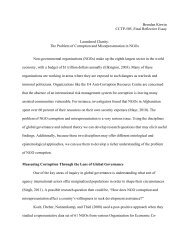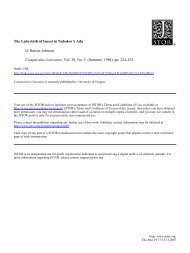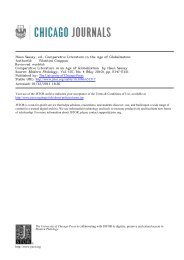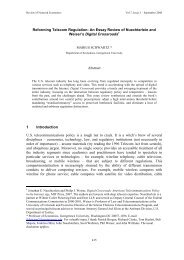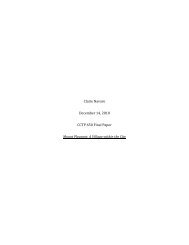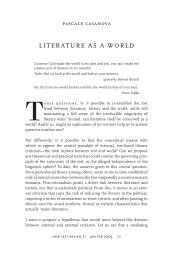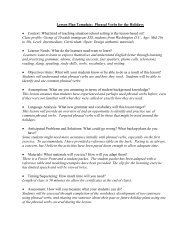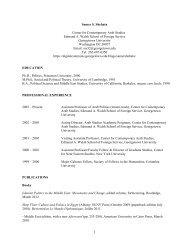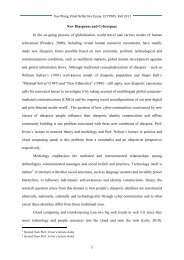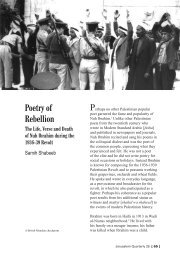Brand Tone of Voice:
Brand Tone of Voice:
Brand Tone of Voice:
- No tags were found...
You also want an ePaper? Increase the reach of your titles
YUMPU automatically turns print PDFs into web optimized ePapers that Google loves.
J. Delin 35be part <strong>of</strong> brand positioning to reflect genre and register in different ways.Different brands output different genres <strong>of</strong> texts, and the pattern <strong>of</strong> genres thatare chosen are part <strong>of</strong> the brand’s communication identity. This means that wemay not always be able to find texts that are comparable between brands.However, I hope it is clear, even given these provisos, that the application<strong>of</strong> some well known language frameworks – chains <strong>of</strong> reference, transitivityanalysis, presupposition, features <strong>of</strong> tenor being but four – can add to ourinsights about how brands communicate and position themselves, deliberatelyor otherwise. What I have not done so far is to attempt to link brands to distinctbrand values, such as warm, expert, and friendly. Neither have I shown thatparticular language features appearing in the brand <strong>Tone</strong> <strong>of</strong> <strong>Voice</strong> will have apredictable effect on readers in general (or readers <strong>of</strong> certain kinds). That is, it isnot possible to say as yet whether deliberate use <strong>of</strong>, say, certain participant rolesor features <strong>of</strong> tenor will prompt readers to feel that the brand is communicatingthe values that the brand owners hope it is. It is crucial that consumer researchon the hypotheses outlined above actually tests whether different languagechoices are having the effects that we intuitively think they might.The four linguistic approaches outlined above represent only a small sample<strong>of</strong> the possible ways in which linguistic theory can be used to interrogate thelinguistic construction <strong>of</strong> brand position. While there is not the room in thispaper to go into the interesting area <strong>of</strong> Appraisal Theory (see for example,Iedema et al., 1994; Christie & Martin, 1997; White, 1998; Macken-Horarik& Martin, 2003, inter alia), the kinds <strong>of</strong> features identified within the Theory(which might be more appropriately termed a model, or an extension <strong>of</strong> thevarious networks within a systemic grammar) are suggested to be those thatshow the writer’s or speaker’s point <strong>of</strong> view or evaluation <strong>of</strong> the content <strong>of</strong>what they are saying. This is likely to be a feature <strong>of</strong> branded texts, and if so, itwill have a role to play in developing a notion <strong>of</strong> authorial presence (or brandpresence?) to readers and hearers. That is, if the brand (or author, or narrator) <strong>of</strong>the text is constructed as having a point <strong>of</strong> view, it is likely that they may comeacross as being more (or less) certain, human, authoritative, and so on – some<strong>of</strong> which features may relate closely to the brand values identified earlier on inthis paper. This view can be stated as Hypothesis 5:Hypothesis 5: Explicit evaluation. The reader’s/hearer’s impression <strong>of</strong> thebrand will be influenced by linguistic markers <strong>of</strong> the brand’s ‘point <strong>of</strong> view’such as those identified within Appraisal Theory.The weasel word here is ‘impression’ – we would <strong>of</strong> course need to find a way<strong>of</strong> identifying what an ‘impression’ is, and how it might vary, in order to testwith groups <strong>of</strong> consumers.



